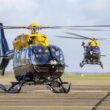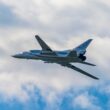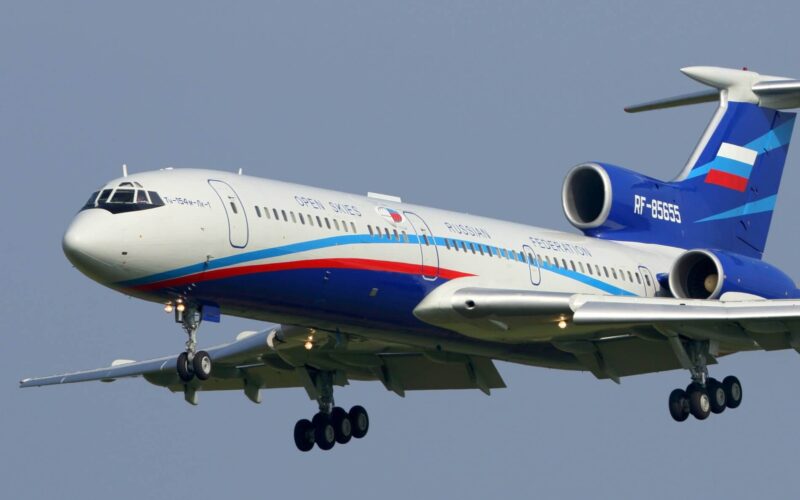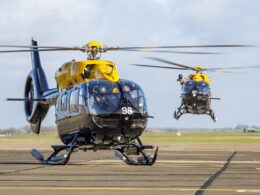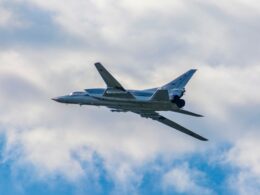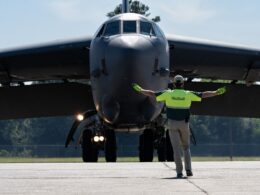Usually, reconnaissance aircraft (colloquially referred to as “spy planes”) approaching foreign airspace provoke a strong reaction, often in the form of an interception and an official diplomatic complaint. However, another means exists to access the airspace of a foreign country and observe its territory without a hitch: open skies overflights. In September 2020, at least two such flights will be carried out thanks to the “Treaty on Open Skies.”
According to Sergey Ryzhkov, head of the Russian National center for nuclear risk reduction, two “Open Skies” flights should take place the same week. Between September 21 and 25, 2020, a Russian Tupolev Tu-154M-LK-1, specially equipped for this mission, will operate from Orléans-Bricy Air Base, central France, with a maximum flight range of 2078 kilometers. Over the same period, a Romanian An-30 observation aircraft will carry out a similar observation flight over Russia on behalf of France and Germany.
All flights will have representatives of the observed country on board to make sure that flight and observation parameters detailed in the treaty are respected.
Romanian Air Force Open Skies Treaty An-30 over Rostov-on-Don currently.
Reg. 1105, ICAO 4A35A8.@steffanwatkins pic.twitter.com/jhY5wPR6GA
— Evergreen Intel (@vcdgf555) September 24, 2020
The Treaty on Open Skies
Initially negotiated between the members of NATO and of the Warsaw Pact, the Treaty on Open Skies was signed in 1992 in Helsinki, Finland. However, it was only ratified nine years later by Russia and came into effect on January 1, 2002.
State parties are Belarus, Belgium, Bosnia and Herzegovina, Bulgaria, Canada, Croatia, the Czech Republic, Denmark, Estonia, Finland, France, the Republic of Georgia, Germany, Greece, Hungary, Iceland, Italy, Latvia, Lithuania, Luxembourg, the Netherlands, Norway, Poland, Portugal, Romania, Russian, Slovakia, Slovenia, Spain, Sweden, Turkey, Ukraine, the United Kingdom, and, for now, the United States. Kyrgyzstan is also a signatory of the treaty but it has yet to be ratified. The countries are all members of the Organization for Security and Co-operation in Europe (OSCE). One of the purposes of those flights is to observe military movements and make sure arms limitation measures are enforced.
Each country must accept a number of observation flights, the “passive quota” and is able to carry out as many as it received, the “active quota”. A 72-hour notice before an observation flight must be communicated to the authorities of the observed country, and the other members of the treaty. Once the flight is carried out, the data collected is available to all signatories.
Asked about the importance of the Treaty, the French Armed Forces General Staff told AeroTime News that “as a guarantee of transparency, it stems from the common will of state parties to create security and confidence on the European continent”.
The flight has to be carried out by an “unarmed, fixed-wing aircraft” equipped with “agreed sensors”. These sensors include optical panoramic and framing cameras, video cameras with real-time display, infra-red line-scanning devices all with limited resolutions defined by the Treaty. While provisions to use sideways-looking synthetic aperture radars exist, none of the aircraft specifically equipped for the application of the treaty have any onboard.
Observations flights are relatively frequent. In 2019, the United States flew around sixteen times over Russia.
The United States withdrawal
In April 2020, President Donald Trump said the United States would withdraw from the treaty over repeated “Russian violations”. His administration argued that similar imagery could be acquired using US satellites. The announcement was met by a wave of concerns among US diplomats and their allies.
In the past, some US officials, including former National Security Adviser John Bolton, have accused Russia of using technologies that the agreement forbade. On September 12, 2018, the Russian government announced that the certification of the digital electro-optical sensor fitted on the Tu-214ON surveillance plane had been refused by the United States. The same sensor that had been approved for use in 2013 for the An-30B and 2016 for the Tu-154M-LK1. A week later, the Trump administration finally signed off the certification.
Another point of contention is the fact that Russia refuses for the treaty to apply to Kaliningrad and to the Georgian territories of Abkhazia and South Ossetia, though it does not constitute a breach of the Treaty, according to the chairman of the House Committee on Foreign Affairs Eliot Engel. “Dialogue and interaction with Russia is important during this time of heightened tension and increased potential for miscalculation,” commented the lawmaker.


